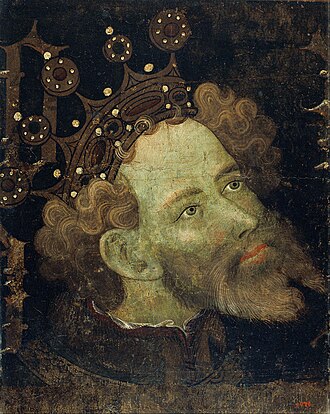Black Death in Spain


Black Death in Spain refers to the devastating impact of the Black Death, a pandemic of bubonic plague, on the Kingdom of Spain during the 14th century. The Black Death was part of a larger pandemic that affected Europe, Asia, and Africa, and is considered one of the deadliest pandemics in human history. The disease arrived in Spain around 1348, having spread from Asia to Europe through trade routes. The impact on Spain was catastrophic, leading to significant social, economic, and cultural changes.
Origins and Spread[edit]
The Black Death is believed to have originated in Asia and spread to Europe through the Silk Road and via merchant ships. It entered Spain through its ports, particularly those in the Kingdom of Aragon and the Kingdom of Castile, which were major centers of trade and commerce. The disease spread rapidly due to the lack of medical knowledge and sanitary practices at the time.
Impact[edit]
The Black Death caused widespread mortality in Spain, with estimates suggesting that between 30% to 50% of the population may have died. This had profound effects on Spanish society. The massive loss of life led to labor shortages, which in turn caused economic turmoil and social unrest. The decrease in population also resulted in a surplus of goods, leading to a decrease in prices and a significant impact on the economy.
The pandemic also had a significant impact on the Catholic Church in Spain. With so many deaths, the clergy was overwhelmed, and the Church struggled to provide the necessary spiritual and burial services. This led to a decline in the influence of the Church and a rise in skepticism and disillusionment among the populace.
Cultural Responses[edit]
The Black Death inspired a notable cultural response in Spain, as it did throughout Europe. Art and literature from the period reflect the widespread despair and obsession with death that the pandemic caused. This is evident in the Danse Macabre motif, which became popular in European art, and in the works of Spanish writers who documented the tragedy and its impact on society.
Aftermath[edit]
The aftermath of the Black Death in Spain was characterized by significant social and economic changes. The labor shortages led to increased wages for workers and a shift in the balance of power between the nobility and the peasantry. This period also saw the beginning of the end for the feudal system in Spain, as the economic and social structures of the Middle Ages began to break down.
The Black Death also had long-term effects on the demographic development of Spain, with some regions taking centuries to recover their pre-pandemic population levels. The pandemic prompted improvements in public health and sanitation, as communities sought to prevent future outbreaks.
Conclusion[edit]
The Black Death was a pivotal event in Spanish history, leading to profound and lasting changes in society, economy, and culture. Its impact was felt not just in the immediate aftermath, but for centuries to come, shaping the development of modern Spain.
Ad. Transform your life with W8MD's Budget GLP-1 injections from $75


W8MD offers a medical weight loss program to lose weight in Philadelphia. Our physician-supervised medical weight loss provides:
- Weight loss injections in NYC (generic and brand names):
- Zepbound / Mounjaro, Wegovy / Ozempic, Saxenda
- Most insurances accepted or discounted self-pay rates. We will obtain insurance prior authorizations if needed.
- Generic GLP1 weight loss injections from $75 for the starting dose.
- Also offer prescription weight loss medications including Phentermine, Qsymia, Diethylpropion, Contrave etc.
NYC weight loss doctor appointmentsNYC weight loss doctor appointments
Start your NYC weight loss journey today at our NYC medical weight loss and Philadelphia medical weight loss clinics.
- Call 718-946-5500 to lose weight in NYC or for medical weight loss in Philadelphia 215-676-2334.
- Tags:NYC medical weight loss, Philadelphia lose weight Zepbound NYC, Budget GLP1 weight loss injections, Wegovy Philadelphia, Wegovy NYC, Philadelphia medical weight loss, Brookly weight loss and Wegovy NYC
|
WikiMD's Wellness Encyclopedia |
| Let Food Be Thy Medicine Medicine Thy Food - Hippocrates |
Medical Disclaimer: WikiMD is not a substitute for professional medical advice. The information on WikiMD is provided as an information resource only, may be incorrect, outdated or misleading, and is not to be used or relied on for any diagnostic or treatment purposes. Please consult your health care provider before making any healthcare decisions or for guidance about a specific medical condition. WikiMD expressly disclaims responsibility, and shall have no liability, for any damages, loss, injury, or liability whatsoever suffered as a result of your reliance on the information contained in this site. By visiting this site you agree to the foregoing terms and conditions, which may from time to time be changed or supplemented by WikiMD. If you do not agree to the foregoing terms and conditions, you should not enter or use this site. See full disclaimer.
Credits:Most images are courtesy of Wikimedia commons, and templates, categories Wikipedia, licensed under CC BY SA or similar.
Translate this page: - East Asian
中文,
日本,
한국어,
South Asian
हिन्दी,
தமிழ்,
తెలుగు,
Urdu,
ಕನ್ನಡ,
Southeast Asian
Indonesian,
Vietnamese,
Thai,
မြန်မာဘာသာ,
বাংলা
European
español,
Deutsch,
français,
Greek,
português do Brasil,
polski,
română,
русский,
Nederlands,
norsk,
svenska,
suomi,
Italian
Middle Eastern & African
عربى,
Turkish,
Persian,
Hebrew,
Afrikaans,
isiZulu,
Kiswahili,
Other
Bulgarian,
Hungarian,
Czech,
Swedish,
മലയാളം,
मराठी,
ਪੰਜਾਬੀ,
ગુજરાતી,
Portuguese,
Ukrainian
